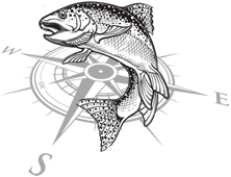South Fork Payette River
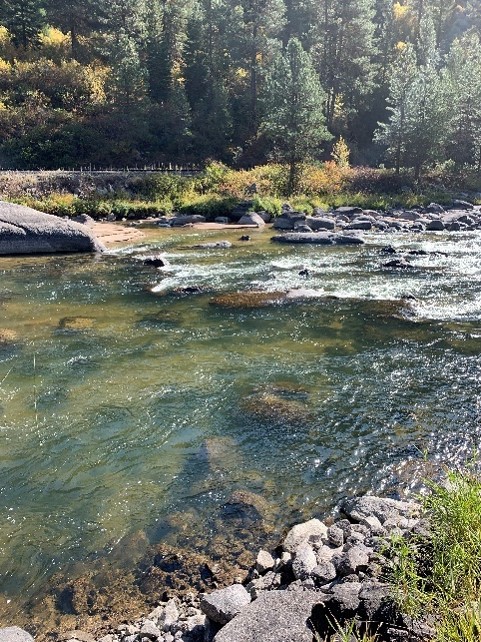
Right in the backyard of the Treasure Valley is a blue ribbon trout river known as the South Fork Payette River. This river begins its course in reverse at the little rafting town of Banks Idaho. It is in Banks Idaho where the North Fork Payette River and the South Fork Payette River join to form the Payette River. Banks is 45 minutes from Boise and the beginning of 54 miles of freestone river and Highway 17 known as the Banks to Lowman Hwy. If the South Fork Payette River was 45 minutes from any major city, like say Phoenix AZ, the South Fork Payette River would be considered one of the best trout rivers of the West.
Instead it is 45 minutes from the Treasure Valley, unknown, unfished and unappreciated. I have given presentations to the fly fishing community for over 25 years on how wonderful this river is for the fly fishing soul. Still, it was 21 years before I saw a fly fisherman fly fishing this river. I’m not saying no one fly fishes it, I’m sure they must, it’s that I fly fish this river more than anyone and for all those years I just never ran into anyone. As a matter of fact I can’t remember seeing another on the river the last dozen times I’ve fished it. The point is this river is in our back yard and gets very little attention from the fly fishing community.
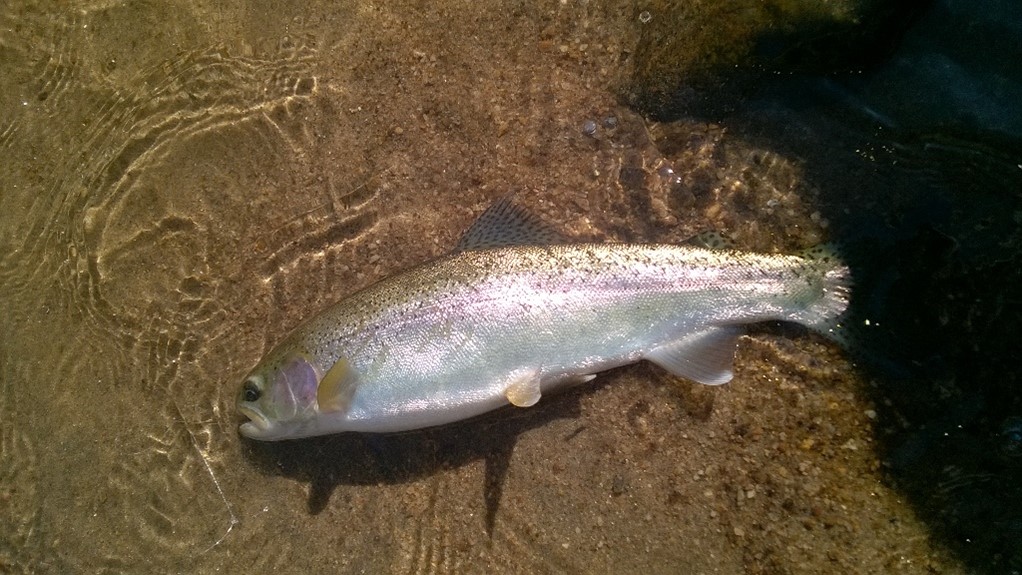
There is a large population of rainbow trout that propagate the entire river system. These trout take a dry fly which is presented to them high and dry like crazy. The trick is to know where these trout live in the river and know where you are on the river. Let’s start with that.
The South Fork Payette River is really a tale of two rivers, the upper South Fork and the Lower South Fork. You need to know this because there are characteristics different in both that you should be prepared for. What divides the river into Upper and Lower is at the point where the Deadwood River flows into the South Fork Payette. Down river from this point is the Lower river while up river from the Deadwood is the Upper river.
The Deadwood River is a tailwater river that is born from the bottom of a dam at the Deadwood Reservoir. However, even though the Deadwood River is a tailwater it fly fishes like a freestone river. This is due in part because of the high altitude at which the reservoir sits. This would be classified as an exception to the rule. Even so the Deadwood River still has some characteristics of a tailwater river that adds to the character of the Lower river. Some of these characteristics are a large increase in flow being added to the lower river. And larger trout with more food to eat. I suppose you could call the Lower river a bastard freestone river where the Lower river fishes like a freestone but has some nice qualities of a tailwater river.
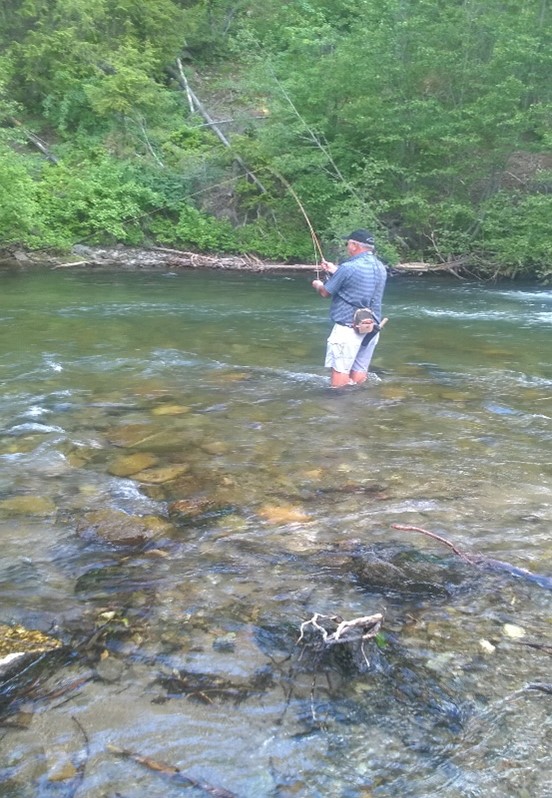
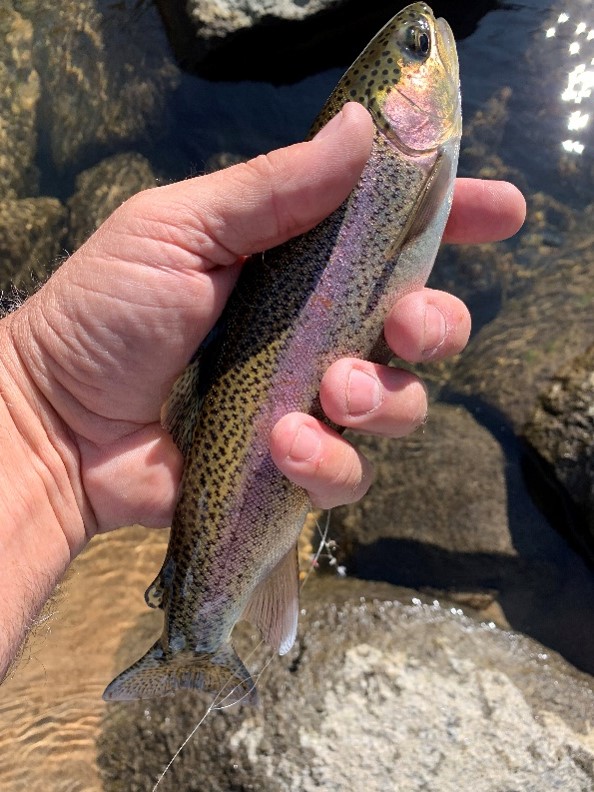
The Upper river is purely a freestone river with all its characteristics such as hungry trout and water that is gin clear. Here the river is a lot lower making wade fishing very accessible. Just to be able to cross the river to put yourself into a better fishing angle can make your day. The rainbow trout that live in this section of river are traditionally smaller, that is the native rainbows. The last few years the Idaho Fish and Game has been planting keeper sized trout from Lowman up to Hellsey Campground. From Lowman up Hwy 21 to about 25 to 30 miles you will find the best pocket water, turning tailouts and long runs of any river I’ve fished. At that point the river will leave the Hwy but continue on for 16 miles along a good gravel road until the road reaches it’s end at Grand Jean Campground.
The Upper section is full of campgrounds and eating establishments like South Fork Lodge and the Sourdough Inn. The “Sourdough” has great pancakes and the best chicken fried steak. I have never nymph fished this section of river simply because I’ve never had too. The river here holds large population of rainbows that take your attractor dry fly easily if you manage to keep your fly dry and floating on the surface. Failure to do that will only make your day less productive. Small size 16 and 18 Stimulators, Annihilators, Adams, Humpies and Wulf round out a great selection of attractor dry flies you should have on hand.
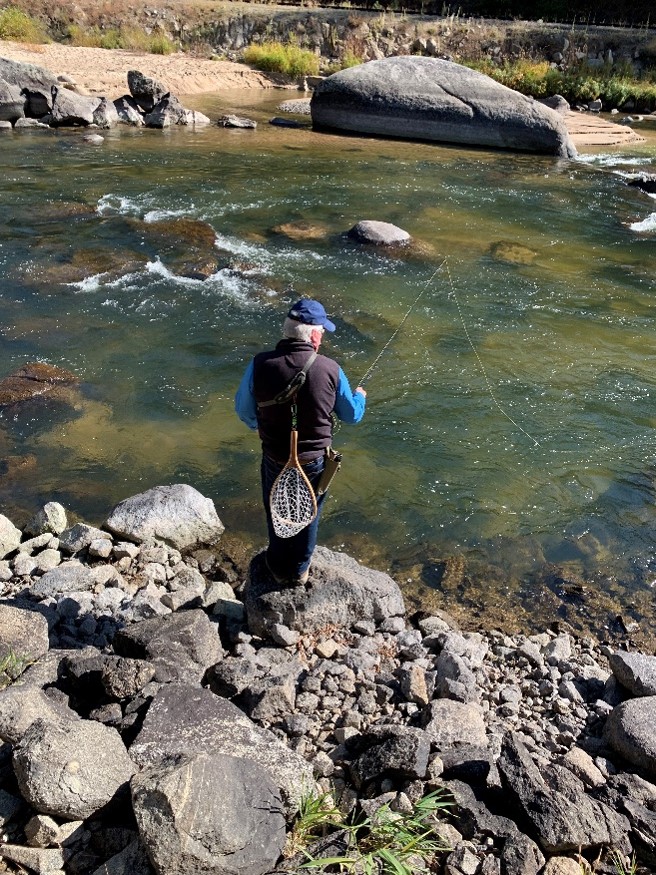
By contrast, the Lower river with the addition of the Deadwood River flows deeper and faster. This is not a bad thing it is just a change in strategy for you are now primarily stuck on the roadside of the river. Because of the depth of the river the trout on the lower section tend to be a little bigger. Trout up to 17 or 18 inches are caught every year by me either nymph fishing or dry fly fishing. Most if not all my fishing on the lower section is with a dry fly using the same dry fly attractor patterns as mentioned before. Access to the Lower South Fork is limited for a large part of the section because the river flows through miles of deep canyon. Unless you have the abilities of a Billy Goat or have the youth of a rock climber I would leave these canyon sections alone.
The key to really being successful on the South Fork Payette River is that you need to be patient and learn where to fish, which takes a time investment on your part and be able to read a river with skill. All trout live on seams, seams are where slow water and fast water meet. On the South Fork Payette River this is exactly where you will find and catch your trout. Failure to identify these areas will only cause your trip to be a failure. Two of the biggest mistakes I’ve seen fly fishers make on freestone rivers is wasting time fishing flat water and failure to keep their dry fly floating high and dry on the surface (Meniscus). Trout in the South Fork Payette River live in fast moving water along seams such as behind a rock or log. Look for turns in the river and rapids. The trout that live there are opportunistic and aggressive to your dry fly. If you manage to catch a trout along a seam in a boulder section then for the rest of your life you will catch a trout on that same seam. After a few years you visit that same seam each time you fish the river and add a new seam for the next trip. Before you know it you are just fishing seams and not the river. This is what I mean by learning the river and making an investment in time to get to know the river.
The South Fork Payette River does not give up her secrets to just any stranger that shows up with a fly rod. She will snub you and ignore you. However, once you show her that you are willing to learn her secrets she will gladly show you where they are. If you listen she will speak to you during every visit. Many anglers I’ve spoken to over the years have related to me they have tried the South Fork Payette River and found the fishing there slow and the fish to small. This is what I’m telling you. You have to invest your time to be let in on the secret. These anglers further tell me they prefer the larger rivers of Southwest Idaho that we are all familiar with. Here they have become accustomed to these rivers and their large trout.
They seem to forget they had to learn those rivers just like I’m suggesting you learn the South Fork Payette. To them the South Fork Payette is nothing more than a diversion from rivers they would prefer to be fishing such as the Owyhee River. I get it. I’m like that sometimes myself. This is why If the South Fork Payette River was 45 minutes away from phoenix, AZ it would be considered on of the top trout rivers in the West. There are simply no other rivers to compete with. As long as we have the Boise River drainage, Owyhee River drainage and the Snake River drainage the South Fork Payette River will continue to be a great river to fly fish with very little fly fishers fishing there.
